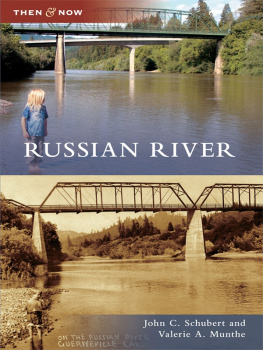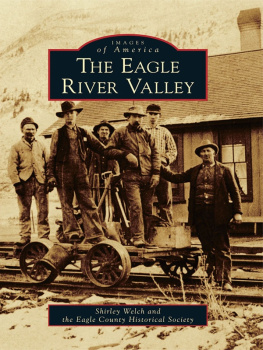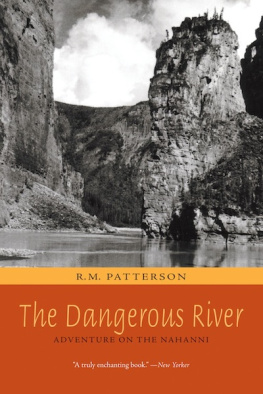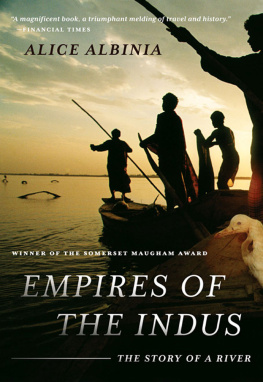ACROSS THE USSURI KRAY

ACROSS THE
USSURI
KRAY
TRAVELS IN THE SIKHOTE-ALIN MOUNTAINS
VLADIMIR K. ARSENYEV
Translated with annotations by
JONATHAN C. SLAGHT

This book is a publication of
Indiana University Press
Office of Scholarly Publishing
Herman B Wells Library 350
1320 East 10th Street
Bloomington, Indiana 47405 USA
iupress.indiana.edu
2016 by Jonathan C. Slaght
All rights reserved
No part of this book may be reproduced or utilized in any form or by any means, electronic or mechanical, including photocopying and recording, or by any information storage and retrieval system, without permission in writing from the publisher. The Association of American University Presses Resolution on Permissions constitutes the only exception to this prohibition.
The paper used in this publication meets the minimum requirements of the American National Standard for Information SciencesPermanence of Paper for Printed Library Materials, ANSI Z39.48-1992.
Manufactured in the United States of America
Cataloging information is available from the Library of Congress.
ISBN 978-0-253-02205-9 (cloth)
ISBN 978-0-253-02215-8 (paperback)
ISBN 978-0-253-02219-6 (ebook)
1 2 3 4 5 21 20 19 18 17 16
For Hendrik Arseniev Slaght
CONTENTS
/ Ivan Yegorchev
FOREWORD
The Unknown Arsenyev
Vladimir Arsenyev (18721930) is a well-known figure among Russians as a scientist, explorer, and writer. He was an officer in the Russian Imperial Army and advanced to the rank of lieutenant colonel by 1913. In his thirty years in the Russian Far East, Arsenyev took part in a dozen major (and innumerable minor) expeditions to study the forested corners of the Ussuri Kray. He is probably best known outside of Russia for Akira Kurosawas adaptation of Dersu Uzala, based on Arsenyevs book of the same name, which won an Academy Award in 1975 for Best Foreign Language Film.
Arsenyevs first offering of popular literature was Across the Ussuri Kray (Dersu Uzala): Travels in the Sikhote-Alin Mountains, published in Vladivostok in 1921 and the subject of translation here. Two years later he published Dersu Uzala: Recollections of a 1907 Expedition to the Ussuri Kray. In 1926, the text of these two books was significantly edited by Soviet censors, combined, and published as In the Wilds of the Ussuri Kray. To give an example of the extent of these redactions, the first edition of Across the Ussuri Kray had forty chapters, but Soviet censorship reduced this to only twenty-eight. Similarly, Dersu Uzala was reduced from thirty chapters to twenty-four. These abridged versions, reprinted again and again, are what generations of Russian readers have been exposed to.
It was only in 2007 that Russian audiences were given access to the original versions, when the Primorye branch of the Russian Geographical Society, called the Society for Study of the Far East, teamed up with Rubezh Publishers in Vladivostok to publish the original, unedited, and uncensored texts as part of a six-volume collection of Arsenyevs writings. It is specifically the 1921 version of Across the Ussuri Kray, free from Soviet edits and censorship, that forms the basis of translation here. For the first time, English-language audiences can read Arsenyev unabridged and in the way that he intended.
Out of all Arsenyevs works, Across the Ussuri Kray was selected for translation first because it provides readers with an excellent introduction to the world of the Ussuri taiga and allows one to experience this wilderness as Arsenyev did. Readers are given a sense of what its like to be a wanderer there, lost in a boundless expanse of forest but moving resolutely toward a clear goal.
It is important to note that although Arsenyev wrote this book based on his field journals, it should not be considered a strict documentation of fact. This is something that many Russian readers, even specialists, have not properly understood. For example, in this text Arsenyev first meets Dersu Uzala in 1902, but according to his field notes their true first encounter was in 1906. There are other examples of departure from fact within the text, usually dates or sequences of events modified to structure the narrative. But the details of his expeditions themselves and the things he saw in those placesthese are all true and supported by his journals.
Arsenyev made the most of his military expeditions by gathering vast amounts of information tangential to his charge. He went out of his way to document and collect local flora and fauna, as well as considerable ethnographical and archeological material now housed in museums all across Russia. But even more important was Arsenyevs ability to transform the scribbles of his field journals into compelling literature. He used his talents as a writer to show others how he viewed the Ussuri Kray and to create a vivid image of the woodsman Dersu Uzala, a local tracker of the Gold tribe. Its easy to forget that Arsenyev also authored multiple scientific texts on a range of topics, including Chinese in the Ussuri Kray (1914), Ethnographical Challenges in Eastern Siberia (1916), and The Pacific Walrus (1927).
Arsenyev was appointed director of the Khabarovsk Museum in 1910, a position he held until 1919. In addition to his time at the museum, he toured Moscow and Saint Petersburg giving lectures on the Far East and received medals from the Russian Museum in Saint Petersburg and the Imperial Russian Geographical Society. In 1919 he was awarded lifetime honorary membership to both the National Geographic Society (United States) and the Royal Geographic Society (United Kingdom).
Arsenyev had eclectic interests: military intelligence and the collection of statistical information, the study of flora and fauna, geology, cartography, ethnography, archeology, toponymy, and population demographics. Readers might be surprised to learn that Arsenyevs only formal education came from a military infantry school in Saint Petersburgeverything else he learned on his own, either from books or from interactions with scientists. Thus, the term self-made man is a perfect description of Arsenyev.
In the aftermath of the Russian Revolution in 1917, Arsenyev chose to accept the Soviet regime rather than flee the country as some of his colleagues did. He garnered considerable success under the Soviets: he became a well-known author, began lecturing at the Far Eastern University, had his books translated into German, and prepared a ten-volume collection of his essays for publication in Moscow. Arsenyev traveled to the Kamchatka Peninsula and the Commander Islands in the 1920s, explored the Amur River basin, helped formulate five-year economic development plans for the region, and continued to study the indigenous tribes of the Kray.
However, it is clear that his relationship with the new regime was overshadowed by political suspicions. In 1926, Vladimir Arsenyev was forced to write a letter to the secret police in the city of Khabarovsk denying an enemy propaganda charge that had been made against him. By the late 1920s he was increasingly criticized in the local press for practicing what was deemed non-Marxist science.
Arsenyev came down with a cold during his final trip, in 1930, to the lower reaches of the Amur River, where he was overseeing four simultaneous expeditions to identify future potential railroad routes. He died of a heart attack on his way home to Vladivostok on September 4th, 1930. He was fifty-eight years old.
Next page











